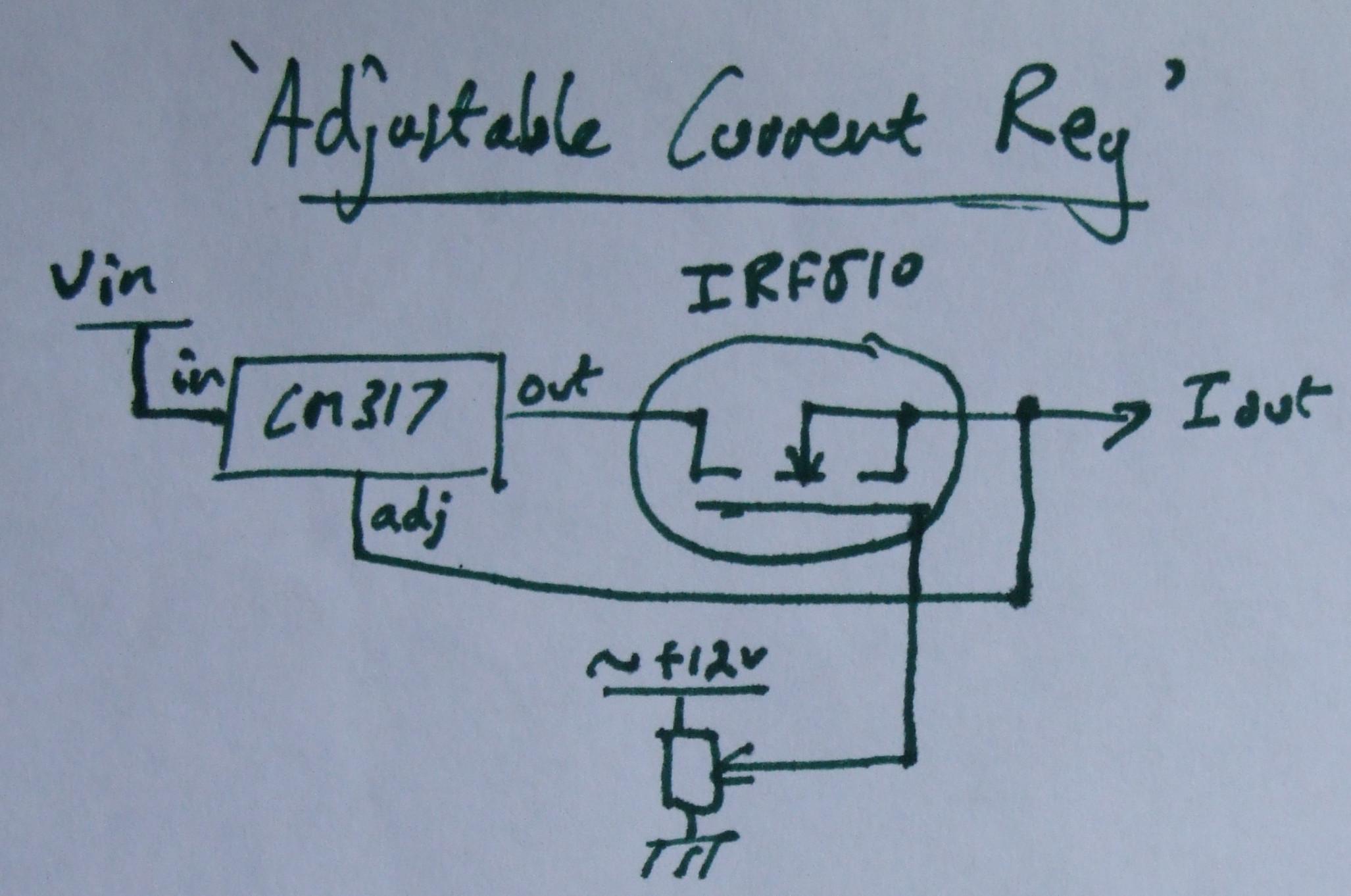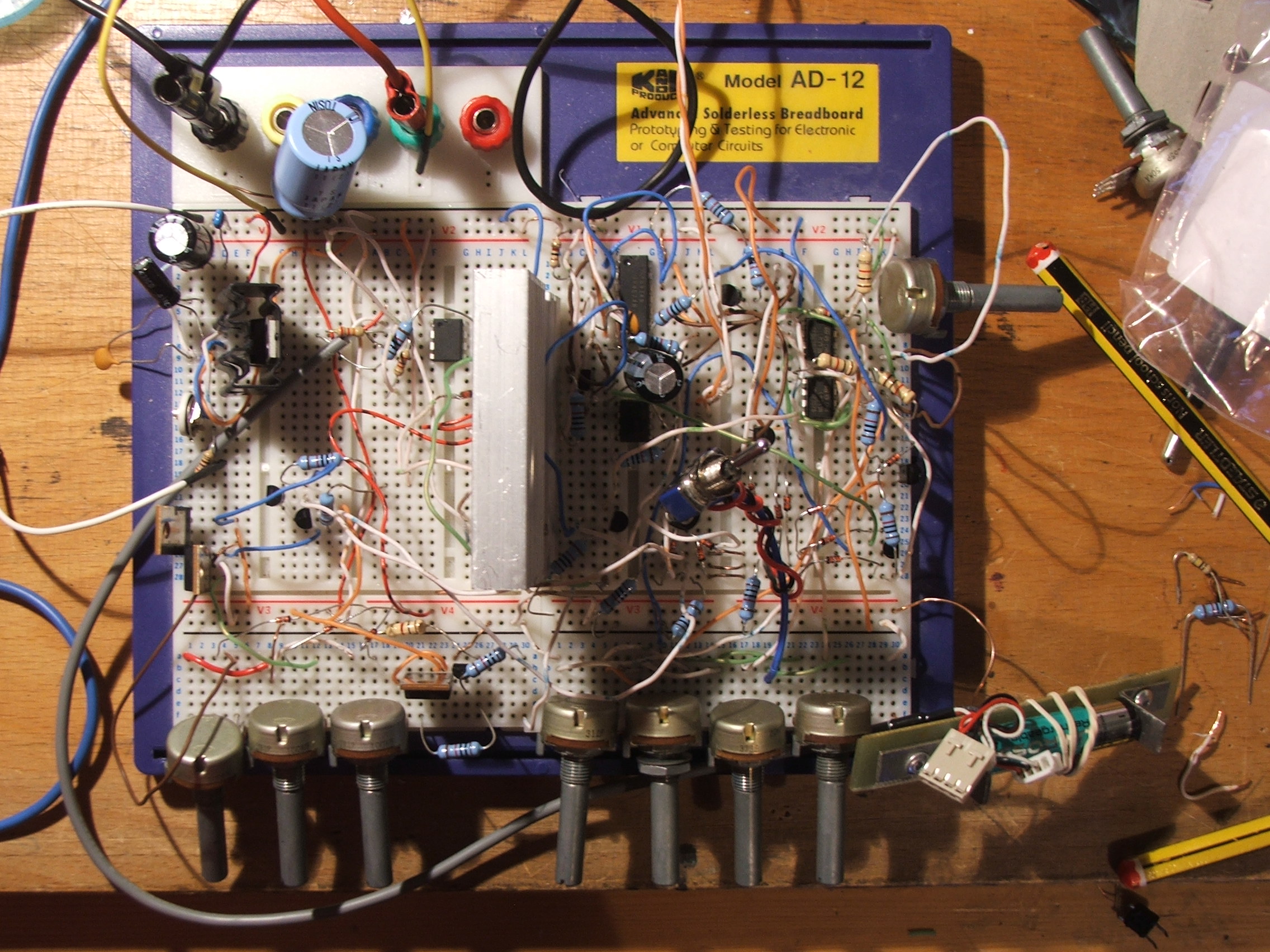There are lots of ‘smart’ chargers out there. Most of them boast that they can charge your batteries quicker than the competition, and that a ‘smart’ algorithm will somehow prevent packing as much current as possible into a cell in the shortest time from having deleterious effects. Slow chargers are harder to come by: there are the cheap constant-current things you run for a certain amount of time—but if your batteries are not absolutely dead they will overcharge, and probably overheat and explode, as mine did. So not ideal. A few vacations ago, as a break from reading, I converted an old analogue ammeter into a basic adjustable-current charger with current and voltage read-off. The current regulation is not particularly clever. It uses the ’trick’ I devised for my AS Electronics coursework
Unfortunately I neglected to allow for heat, and this thing drifts after a while. It does eventually stabilise, but not much of a regulator. But I also had an ARM MBed someone gave me, so I logged the voltage over USB and graphed it: when the batteries hit charge there’s a negative dV/dt which you can easily see and turn off the charger.
The usual, sensible solution is to put the resistive element in the adj line, which avoids power dissipation in it. But oh well. Here, incidentally, is the only picture I can find of the coursework. It wasn’t pretty, but it worked.
It used RDL / RDTL logic for everything; I was being difficult.
Wishlist
The ability to watch the charge on a computer is very useful: I’ve been able to recover some ‘dead’ batteries by watching the curve at low current—the ‘smart’ chargers were terminating on the first ‘blip’, long before the battery was full. Also, one should be able to leave a charger running and know it’ll turn off; and the conditions for doing so as well as the shape of the charge should be easily modifiable in software. I no longer have a laptop with serial or parallel ports, so communication really needs to be over USB. Lastly, this is merely a break from reading, so it should be built easily with things I have on hand. So:
- MPU based (how else?)
- programmable and logging over USB
- voltage sense
- software controllable charging current
- programmable charge profile
Hardware
The only MPUs I have on hand are PIC18 devices. I’ve written a lot of assembler in the past, and cannot remember any of it. So it needs to be higher level than that: I spent a fruitless few hours looking through usb stacks in C. All much too complicated to throw together in a hurry, or refusing to compile: I spent a few more fruitless hours compiling an old version of SDCC to compile one of them, only to discover that I had no development board spare. Meanwhile reading is not getting done nor batteries charged. Rooting through old files I rediscovered the (rather dormant) Pinguino project. Arduino-like simplicity (and no doubt overhead, but who cares?), native USB and LCD libraries, etc. That would be nice. So now I need a development board, and then at the very least I can have the PIC log over serial like the MBed used to. The current regulator, etc, will come later, but the PIC has two PWM outputs and I can implement at least one more in software if need be; smooth the voltage and you just need a voltage-controlled current source of no great stability or power, which is not exactly unheard of.

